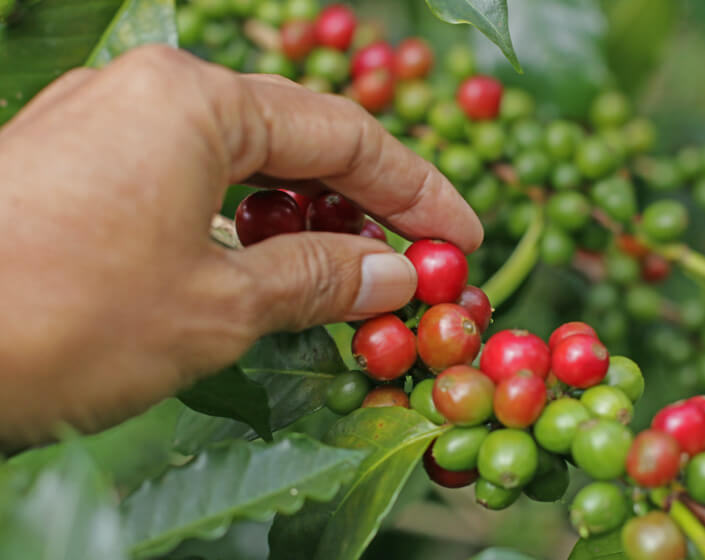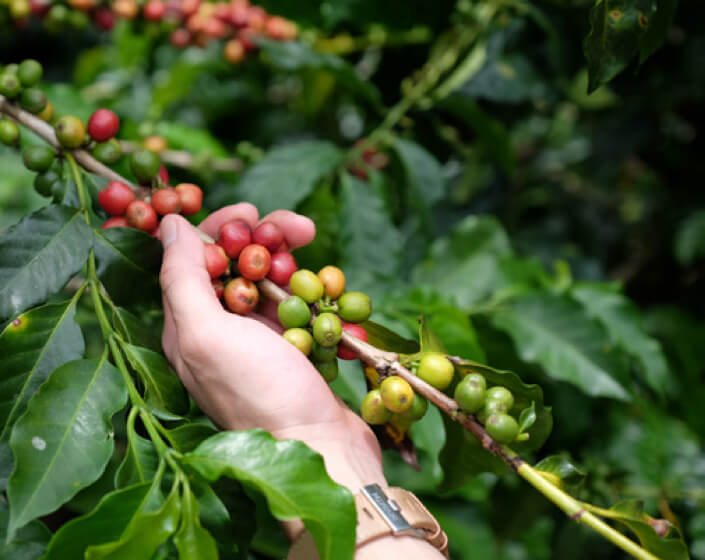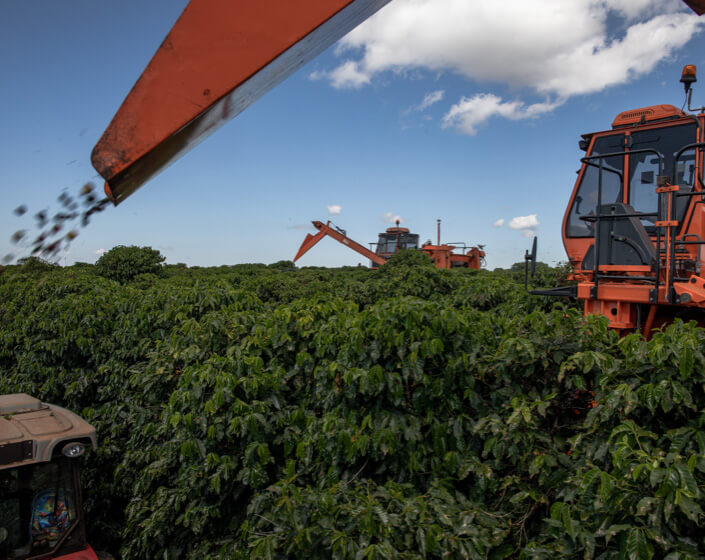To make a 500 g package of roasted coffee beans, you need about 2.5 kg of coffee cherries that can be harvested in one of three ways. But which harvesting method is right for which coffee?
Picking
The most labour-intensive method is probably hand-picking. Pickers select individual coffee cherries, taking only those that are ripe and leaving the rest on the plant. The cherries do not all ripen at once, so pickers have to return to the crops several times until all of the fruit is harvested.
This is a very time-consuming and cost-intensive harvesting method and is used above all for arabica coffees that are later washed.


Stripping
With the stripping method, sheets are typically spread on the ground around the coffee plants. If the majority of the coffee cherries are ripe, all of the fruit is stripped off the branch by hand in one stroke so that it falls on the sheets and can simply be gathered. Later, leaves and twigs are removed along with any unripe or over-ripe cherries. This is a traditional method that is still widely used for harvesting both robusta and arabica coffee.
Machine harvesting
Although coffee plants are sensitive and must be handled with great care, there is also the mechanical harvesting method. Harvesting machines are mainly used on large-scale, flat plantations, such as those in Brazil and, to some extent, Vietnam. These machines “comb” the branches of the coffee plants, causing the coffee cherries to fall into baskets below. As in the case of stripping, however, plant remains and unripe or over-ripe cherries must be sorted out before the next stage of processing.
This highly efficient harvesting technique is much more cost-efficient than the other two methods, but the coffee plants themselves pay a high price.
Freshly harvested coffee cherries can be stored for only a brief time, so it is important to start the next stage of processing soon after the harvest.
